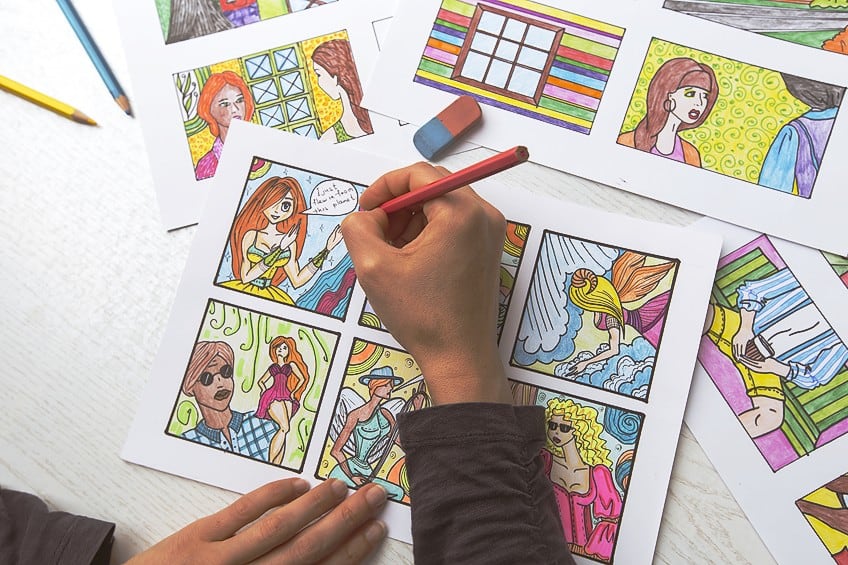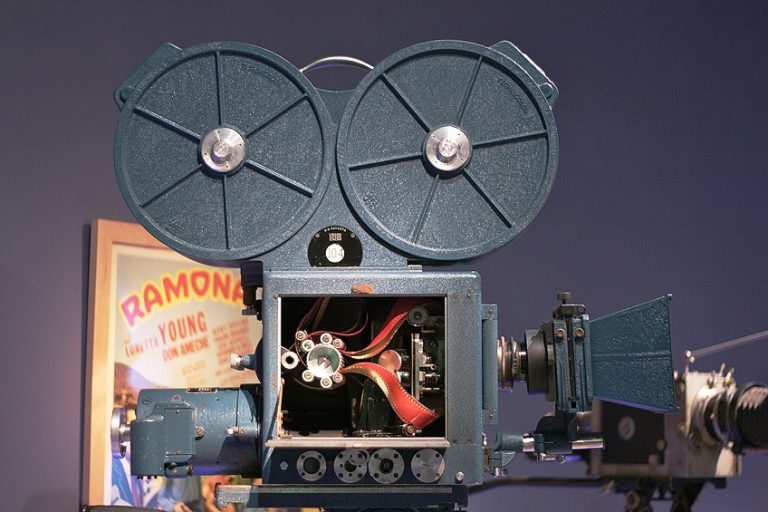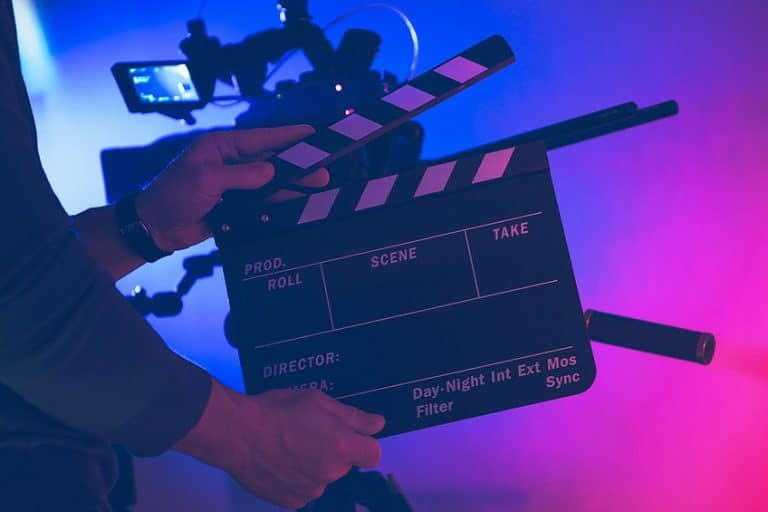How to Make a Storyboard for a Film – Sketching Cinematic Vision
In the captivating world of cinema, storytelling is a craft that weaves together the threads of imagination and visual artistry, and at its heart lies the enigmatic realm of storyboards. Have you ever wondered how to make a storyboard for a film? These intricate blueprints of creativity serve as the cinematic architect’s secret weapon, allowing them to meticulously plan each shot, angle, and transition that graces the silver screen. But what is a storyboard in film, you may ask? It is the cinematic roadmap, a visual script, a director’s canvas, and a storyboard artist’s canvas all rolled into one. In this exploration of the art and science of movie storyboarding, we will uncover the secrets of how to storyboard and create a storyboard that breathes life into your cinematic dreams.
Table of Contents
- 1 What Is a Storyboard in Film?
- 2 Tips and Tricks for Creating Your Own Movie Storyboard
- 2.1 Master the Basics of Storytelling
- 2.2 Study Existing Storyboards
- 2.3 Start With a Script
- 2.4 Create a Clear Shot List
- 2.5 Storyboard Artist or DIY
- 2.6 Use Storyboard Templates
- 2.7 Simplicity Is Key
- 2.8 Focus on Composition
- 2.9 Storyboard With Emotion
- 2.10 Include Movement and Transitions
- 2.11 Color and Mood
- 2.12 Collaborate and Communicate
- 2.13 Edit and Revise
- 2.14 Digital Tools
- 2.15 Presentation
- 3 How to Make a Storyboard for a Film
- 3.1 Step 1: Start With a Compelling Script
- 3.2 Step 2: Break Down the Script
- 3.3 Step 3: Develop a Shot List
- 3.4 Step 4: Define the Visual Style
- 3.5 Step 5: Sketch the Storyboard
- 3.6 Step 6: Compose Each Frame
- 3.7 Step 7: Express Emotions and Character Dynamics
- 3.8 Step 8: Include Descriptive Notes
- 3.9 Step 9: Depict Movement and Transitions
- 3.10 Step 10: Incorporate Dialogue and Sound
- 3.11 Step 11: Use Color to Enhance Mood
- 3.12 Step 12: Digital Storytelling
- 3.13 Step 13: Review and Revise
- 3.14 Step 14: Present and Communicate
- 3.15 Step 15: Adapt to Changes
- 4 Free Tools and Templates for Your Storyboards
- 4.1 Canva: A Versatile Graphic Design Tool
- 4.2 Storyboard That: A Dedicated Storyboarding Tool
- 4.3 FrameForge Previz Studio: 3D Storyboarding Software
- 4.4 ShotPro: Mobile Storyboarding App
- 4.5 StudioBinder: A Comprehensive Filmmaking Platform
- 4.6 Powerpoint or Google Slides: Familiar Presentation Tools
- 4.7 Celtx: A Screenwriting and Storyboarding Tool
- 4.8 Boords: A Collaborative Storyboarding Tool
- 5 Frequently Asked Questions
What Is a Storyboard in Film?
A well-crafted story is the heartbeat of any great film, but it is the storyboard that serves as the silent architect, laying the foundation for the entire visual experience. So, what is a storyboard in film, and why is it such a crucial aspect of the entire filmmaking process? In this exploration, we will dive deep into the art of storytelling through visuals, revealing the secrets of how to make a storyboard for a film, how to storyboard effectively, and the immense importance of having a movie storyboard ready for when your shoot date arrives. At its core, a storyboard is the film’s narrative being represented in a visual format, often in the form of a sketch of each shot, with breakdowns on camera movement and character actions.
It is a series of illustrations or images, often accompanied by descriptions and notes, that break down the movie into individual scenes and shots.
These visual blueprints help directors, cinematographers, and the entire film crew envision the story’s progression, framing, and sequencing before the cameras start rolling. But the storyboard is much more than a series of mere sketches. It is an immensely powerful tool that nullifies the space between imagination and execution, one that breathes life into our cinematic dreams. The process of how to storyboard begins with a clear understanding of the film’s script or screenplay. It is the blueprint for the film’s storyboard, dictating each scene, character, and line of dialogue. Once the script is in hand, a filmmaker, often working in tandem with a storyboard artist, begins to create a storyboard that visually translates the written words into a series of images. Each image corresponds to a specific shot in the film, revealing the framing, composition, camera angles, and character positions and movements.

But why is a storyboard so essential? For starters, it serves as a communication tool between the director and the entire production team. Imagine a director conveying their vision for a pivotal action sequence or a heartfelt dialogue exchange to the cinematographer, set designer, and costume department. With the aid of a well-crafted storyboard, this intricate vision becomes crystal clear, streamlining the entire production process to a significant degree. It helps to reduce confusion on set to a significant degree, all while ensuring that every member of the production team remains on the same page, working towards a common goal. Moreover, a movie storyboard helps with the efficient allocation of resources. It provides a detailed breakdown of all the shots required for a film, allowing the production team to plan their shooting schedules, location setups, and equipment needs.
By identifying precisely what is needed for each scene, the team can avoid costly and time-consuming mistakes that might arise from last-minute changes or improvisations.
A well-constructed storyboard is also a valuable editing tool. As the filmmaker envisions the film in advance, they can make creative decisions regarding pacing, mood, and overall visual aesthetics. This pre-visualization allows them to fine-tune the storytelling aspect before investing significant time and resources in the actual production phase. It is akin to sketching a painting before applying the final strokes – a way to experiment and refine the narrative, ensuring it resonates with the intended audience. Storyboarding also plays a critical role in budgeting. By breaking down each scene of the film into individual shots, it is easier to calculate and estimate the costs associated with each scene. This knowledge helps in making informed decisions about where to allocate the budget, whether it is a grand, sweeping landscape shot, a complex action sequence, or a simple dialogue scene. In this way, a storyboard contributes to cost-effective filmmaking without compromising on artistic quality.

The power of storyboarding extends to post-production as well. Editors can refer to the storyboard to understand the director’s original vision and ensure that the final cut aligns with it. This can be particularly helpful when reshooting or re-editing sequences to enhance the overall impact of the film. However, a storyboard is not just a tool that is used by only the director and the production team. It is also a crucial aid in conveying the vision of the film to potential investors, producers, and distributors. A well-crafted storyboard can captivate stakeholders, helping them understand the project’s potential and ultimately securing the necessary funding to bring the cinematic vision to life.
In essence, a storyboard is a vital bridge between the written script and the visual narrative on the big screen.
It is a creative roadmap that guides the director’s vision, streamlines production, aids in budgeting, enhances storytelling, and serves as a persuasive tool for securing resources. It is not merely a collection of images; it is the embodiment of cinematic imagination, a masterful storyteller in its own right. So, the next time you find yourself immersed in a gripping film, remember that behind the scenes, a storyboard was the silent yet powerful force that helped shape that cinematic masterpiece.

Tips and Tricks for Creating Your Own Movie Storyboard
A well-crafted storyboard is the unsung hero, the silent conductor that orchestrates the grand symphony of visual storytelling. Whether you are an aspiring filmmaker in the beginning of your career or a seasoned pro with countless films under your belt, understanding how to make a storyboard for a film is an invaluable skill. It is the bridge between your imagination and the audience’s emotions, and it is a fundamental aspect of the filmmaking process.
In this guide, we will explore the best tips and tricks for creating your own movie storyboard, demystifying the art of storyboarding while shedding light on the key question, “what is a storyboard in film?”
Master the Basics of Storytelling
Before you delve into the world of storyboarding, it is crucial to have a solid grasp of storytelling fundamentals. This relates to understanding the concepts of the three-act structure, character arcs, and narrative pacing. This foundational knowledge will help you create a storyboard that effectively conveys your story’s emotional and dramatic beats.

Study Existing Storyboards
One of the best ways to learn how to storyboard is by studying existing movie storyboards. Analyze storyboards from your favorite films, paying attention to how they capture the essence of a scene.
This can provide you with an abundance of inspiration, along with some invaluable insight into how you can achieve effective storytelling through mere visuals.
Start With a Script
A well-constructed script is the foundation of any successful movie storyboard. Before you can create a storyboard, you need a script that details the dialogue, characters, and action in each scene. Break the script down scene by scene to determine what needs to be visualized.

Create a Clear Shot List
Begin by creating a shot list for each scene. What are the key shots that will convey the scene’s essence? Consider the camera angles, movement, and composition. This preliminary step will guide your storyboard creation.
Storyboard Artist or DIY
Decide whether you will be creating the storyboard yourself or if you need a storyboard artist. If you are artistically inclined, DIY storyboarding can be a rewarding experience. However, if you are not confident in your drawing skills, hiring a professional artist might be the way to go.

Use Storyboard Templates
There are many storyboard templates available online that can streamline the process. These templates offer pre-drawn frames and space for notes, making it easier to create a professional-looking storyboard.
Simplicity Is Key
When creating your own storyboard, keep it simple. Your goal is to communicate the essence of the scene, not to create a work of art. Stick to basic sketches that convey the necessary information.
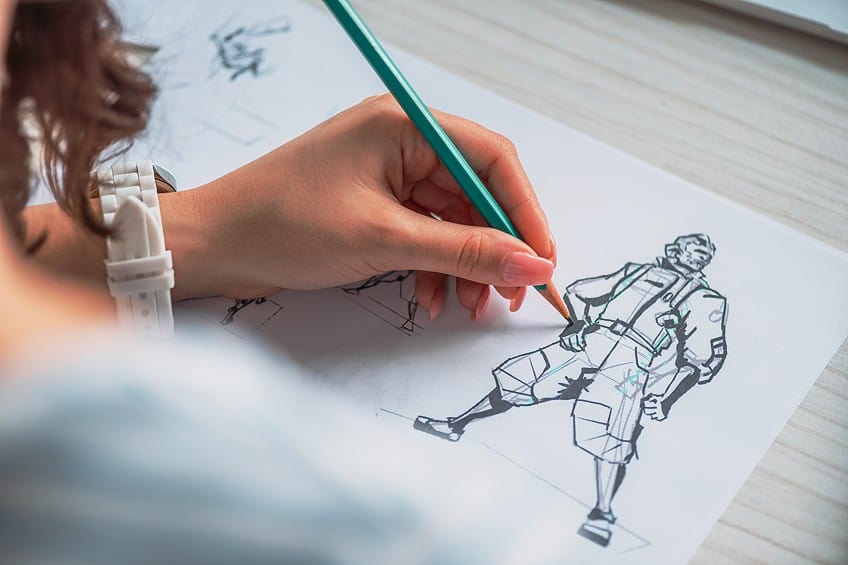
Focus on Composition
Pay attention to composition within each frame. Use the rule of thirds to create visually appealing shots. Think about how the elements within the frame interact and contribute to the scene’s mood and meaning.
Storyboard With Emotion
Remember that a storyboard is not just about the physical aspects of a scene; it is also about emotion. Convey the characters’ feelings and the atmosphere of the scene through your visuals. Facial expressions, body language, and lighting can all play a significant role.

Include Movement and Transitions
Use arrows and notes to indicate camera movement and transitions between shots. This helps the director and the production team understand the flow of the scene.
Color and Mood
Consider using color to represent the mood of a scene. Warm colors might convey a sense of coziness or happiness, while cool colors could evoke tension or sadness. Do not underestimate the power of color in storytelling.
Collaborate and Communicate
A storyboard is a collaborative tool as it can be used to effectively convey your vision to the rest of your production team. You should remain open to feedback and suggestions, as the collaborative process often leads to a richer and well-defined final product.
Edit and Revise
Creating a storyboard is an iterative process. Do not be afraid to revise and refine your storyboard as your project evolves. It is a flexible tool that should adapt to the changing needs of your production.

Digital Tools
If you prefer a digital approach, there are various storyboard software and apps available that can simplify the process. They offer digital drawing tools, templates, and the ability to collaborate with others online.
Presentation
When presenting your storyboard to your team, be confident and prepared to explain your creative choices. A well-communicated vision can inspire and motivate your crew. Learning how to storyboard is a valuable skill that can significantly enhance your filmmaking endeavors. A movie storyboard serves as the visual blueprint of your film, guiding your team and bringing your cinematic vision to life.

So, whether you are an aspiring director or an experienced filmmaker, these tips and tricks will help you create compelling storyboards that capture the essence of your storytelling and elevate your filmmaking to new heights.
How to Make a Storyboard for a Film
Storytelling is an art that brings together imagination and visual craft. At the heart of this creative process lies the storyboard, a dynamic blueprint that visually interprets the written word and transforms it into a vivid cinematic experience. If you have ever wondered how to make a storyboard for a film, you are in the right place. This comprehensive step-by-step guide will walk you through the intricate process of storyboarding, providing you with the knowledge and skills to create a compelling movie storyboard.
But before we delve into the details, let us freshen up on the essence of what a storyboard in film truly is.
A storyboard is a series of illustrations or images, often accompanied by descriptive notes, that serves as a visual representation of a film’s narrative. It breaks down the entire movie into individual scenes and shots, essentially providing a visual roadmap for the film’s production. This powerful tool aids in effectively conveying the director’s vision to the production team, enabling a shared understanding of the creative vision. Now, let us explore the step-by-step process of how to make a storyboard for a film.
Step 1: Start With a Compelling Script
The foundation of any movie storyboard is a well-constructed script or screenplay. This written document outlines the story, including dialogue, characters, setting, and actions. Therefore, the first step in creating a storyboard is to have a script that serves as the source material from which you will draw your visual inspiration.
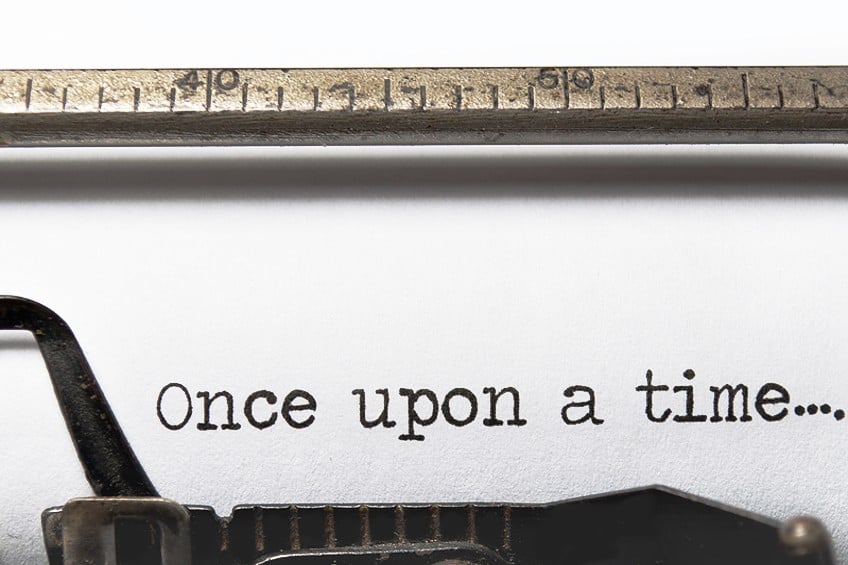
Step 2: Break Down the Script
With the script in hand, it is time to break it down into individual scenes. Identify the beginning and ending of each scene, which will serve as the basis for your storyboard frames. This breakdown helps organize your work and ensures that you are not overwhelmed by the entirety of the script.
Step 3: Develop a Shot List
Before you start sketching, create a shot list for each scene. The shot list is a prelude to your storyboard, outlining the key shots and angles necessary to convey the essence of the scene. This list guides your visual approach and provides a clear roadmap for your storyboard.
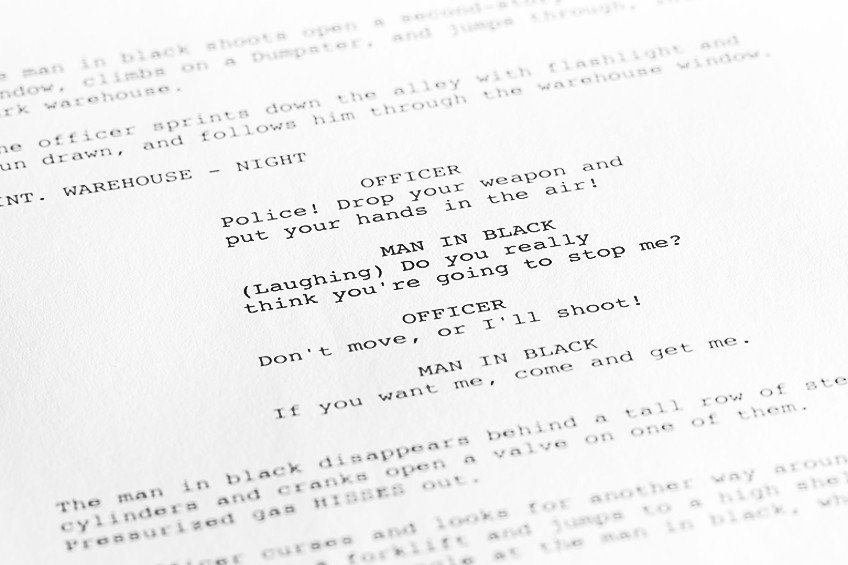
Step 4: Define the Visual Style
Consider the visual style you wish to employ in your film. Are you aiming for a gritty, handheld camera look, or does your vision require smooth, sweeping cinematography? Your visual style will significantly influence the choice of angles, compositions, and camera movements in your storyboard.
Having a clear visual style in mind is essential for the overall cohesiveness of your project.
Step 5: Sketch the Storyboard
This is where the artistic aspect of storyboarding comes into play. You can either create the storyboard yourself if you have drawing skills, or you can collaborate with a professional storyboard artist. If you opt to draw your own frames, start with basic sketches that focus on conveying the essential elements of each shot. Do not worry about creating elaborate artwork; the primary goal is to communicate the scene’s visual elements.
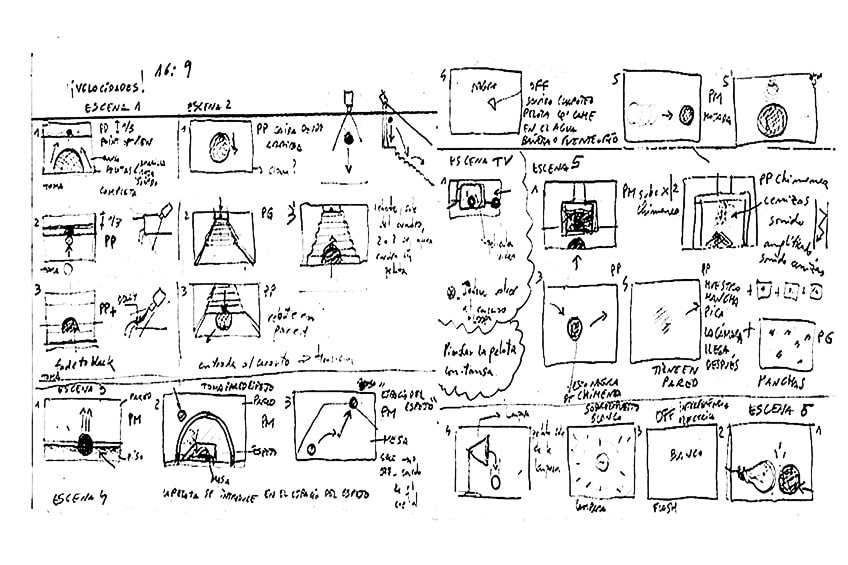
Step 6: Compose Each Frame
Pay careful attention to how each frame of your storyboard is composed. Refer to the implementation of the rule of thirds, leading lines, and other principles of visual composition within your shots.
Consider how the various aspects of the frame interact and contribute to the mood and storytelling of the scene.
Step 7: Express Emotions and Character Dynamics
It is crucial to convey character emotions and dynamics in your storyboard frames. Use facial expressions, body language, and positioning to communicate the feelings and interactions of the characters. Capturing these nuances adds depth and emotional resonance to your storyboard.

Step 8: Include Descriptive Notes
Each frame in your storyboard should be accompanied by descriptive notes and annotations. These notes can cover a range of details, from camera movements to lighting instructions. They provide essential guidance to the production team, helping them understand the technical and creative aspects of the scene.
Step 9: Depict Movement and Transitions
Use arrows, lines, and simple annotations to indicate camera movement and transitions between shots. Clearly illustrating movement is particularly important for action sequences or scenes with complex camera maneuvers. It ensures that everyone on the production team is aligned with the intended flow of the scene.
Step 10: Incorporate Dialogue and Sound
If your film includes dialogue or specific sound requirements, make sure to include them in your storyboard. You can use speech bubbles or text to indicate what the characters are saying or to highlight important sound effects.
This aspect adds aural dimension to your visual representation.
Step 11: Use Color to Enhance Mood
Consider incorporating color into your storyboard to convey the mood of a scene. Warm colors may evoke a sense of comfort or happiness, while cool colors can create tension or sadness. The strategic use of color can significantly influence the emotional impact of your storyboard.

Step 12: Digital Storytelling
In the digital age, various storyboard software and apps are available to simplify the process. These digital tools offer features such as digital drawing capabilities, templates, and the option to collaborate with team members online.
If you are more comfortable with digital tools, this approach can streamline your workflow significantly.
Step 13: Review and Revise
Storyboarding, as previously mentioned, is a highly iterative process. After creating your initial frames, take the time to review your work. Be open to revisions and feedback from the director or other team members. This collaborative approach often leads to improvements and refinements, resulting in a richer final product.

Step 14: Present and Communicate
When presenting your storyboard to the production team, be prepared to explain your creative choices and decisions. A well-communicated vision can inspire and motivate your crew, ensuring that everyone is aligned with the director’s vision and objectives.
Step 15: Adapt to Changes
Throughout the production process, be flexible and prepared to adapt your storyboard to changes and unforeseen circumstances. Filmmaking is dynamic and your storyboard should remain flexible to accommodate necessary adjustments. To end off our guide, learning how to make a storyboard for a film is a valuable skill for any aspiring filmmaker. A movie storyboard is not merely a planning tool; it is a visual narrative that guides the entire production team in translating the director’s vision into a cinematic masterpiece.
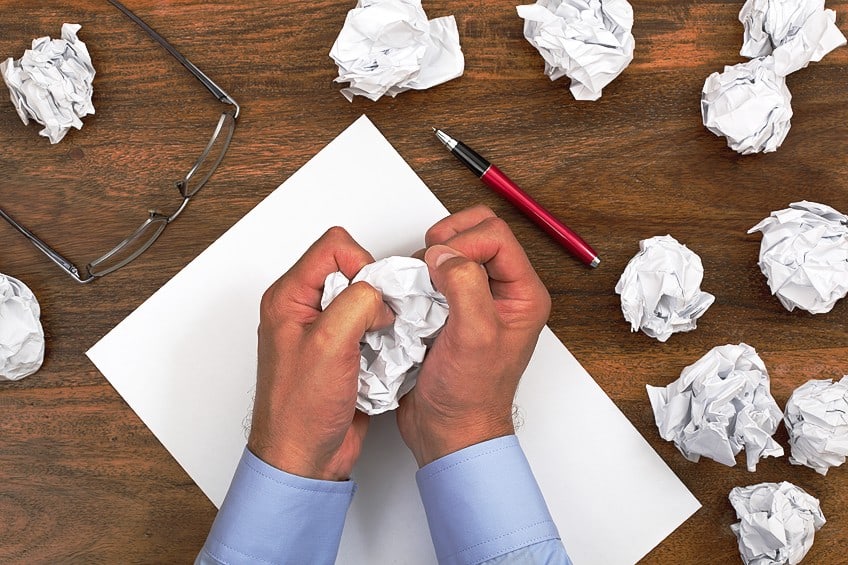
Whether you are sketching by hand or using digital tools, a well-executed storyboard is your key to a successful and organized filmmaking journey. So, pick up your pencil or stylus, and start crafting your visual story – one frame at a time. Remember, a compelling storyboard is the bridge that connects your imagination to the cinematic world, and it is an integral part of the enchanting journey of filmmaking.
Free Tools and Templates for Your Storyboards
Storyboarding is an essential aspect of the filmmaking process, serving as the visual blueprint that guides the production team in translating the director’s vision into a cohesive and compelling narrative. While professional storyboard artists can create intricate and detailed storyboards, not everyone has access to such resources. Thankfully, there are free tools and templates available that can empower filmmakers, whether amateurs or professionals, to create their own movie storyboards with precision and creativity.
Below, we will explore a selection of these invaluable resources that can enhance your storytelling and streamline your filmmaking journey.
Canva: A Versatile Graphic Design Tool
Canva is a popular online platform for the purposes of graphic design, and has become widely acclaimed for its user-friendly interface and an ever-increasing range of templates for all your design needs. While Canva is not specifically tailored for storyboarding, its versatility makes it an excellent choice for creating simple, yet visually engaging storyboards. Canva also helps you find a myriad of customizable templates, each of which allow you to insert images, text, and shapes to create your storyboard frames. This tool is especially useful for those who prefer a digital and easy-to-use platform.
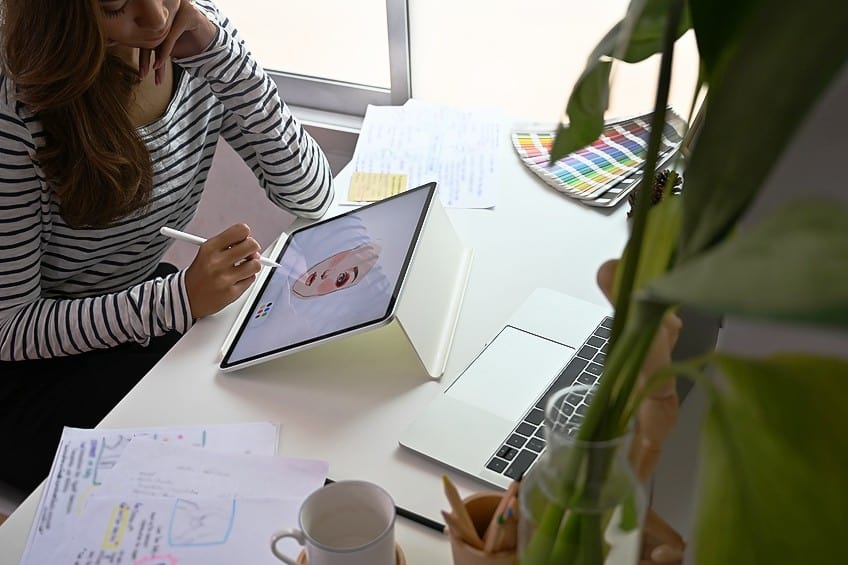
Storyboard That: A Dedicated Storyboarding Tool
Storyboard That is a dedicated online tool designed for creating storyboards, making it an excellent choice for filmmakers. While it offers a free trial, which has certain limitations, it provides a simple and intuitive interface with drag-and-drop features to create your storyboard frames. You can also customize characters, scenes, and props to visually represent your narrative.
The tool is well-suited for individuals who want a specific solution for storyboarding.
FrameForge Previz Studio: 3D Storyboarding Software
FrameForge Previz Studio is a powerful 3D previsualization software that allows you to create detailed and dynamic storyboards. While the full version does require payment to gain access to all the available features, the company offers a free version with limited features. This tool enables you to create storyboards in a 3D environment, giving you a better sense of camera angles, character positioning, and scene blocking. It is particularly beneficial for filmmakers who want to explore the spatial dynamics of their shots.

ShotPro: Mobile Storyboarding App
ShotPro is a mobile app available for iOS devices that allow you to create storyboards on the go. While the app offers a paid version with advanced features, it also provides a free version with basic capabilities. ShotPro lets you create shot lists, visualize camera movements, and add text and annotations to your frames.
It is a convenient option for filmmakers who prefer mobile solutions.
StudioBinder: A Comprehensive Filmmaking Platform
StudioBinder is an all-in-one filmmaking platform that offers a free version with limitations on the number of projects you can create. While it is a comprehensive solution that covers various aspects of film production, it includes storyboard features that allow you to create visually appealing storyboards. StudioBinder is an excellent choice for filmmakers who want a comprehensive solution for project management and storyboarding.

Powerpoint or Google Slides: Familiar Presentation Tools
Powerpoint and Google Slides, both commonly used for creating presentations, can also be employed for storyboarding. You can use the slides as individual frames, inserting images and text to depict scenes.
These tools are ideal for those who are already familiar with them, as they offer straightforward and accessible ways to create basic storyboards.
Celtx: A Screenwriting and Storyboarding Tool
Celtx is a free and comprehensive pre-production tool designed for screenwriters and filmmakers. While it primarily focuses on screenwriting, it also provides a storyboard feature that allows you to create and manage storyboards within the platform. Celtx is a great choice for those who want an integrated solution for screenwriting and storyboarding.
Boords: A Collaborative Storyboarding Tool
Boords is a user-friendly online platform that offers a free plan with limitations. It is designed to simplify the storyboard creation process and provides features for adding images, text, and annotations to frames. This particular tool also allows for enhanced collaboration between members, making it an excellent choice for filmmakers working with a team.

Creating a storyboard is not merely a technical task; it is an intricate dance between imagination and execution. It bridges the gap between a script’s written words and the cinematic experience, offering filmmakers a roadmap to bring their vision to life. From breaking down the script to sketching frames and adding creative touches, the process of storyboarding empowers filmmakers to craft compelling narratives that resonate with audiences and stand as testaments to the art of visual storytelling.
Frequently Asked Questions
What Is the Purpose of Creating a Movie Storyboard?
A movie storyboard serves as a visual roadmap for a film, breaking down the script into individual scenes and shots. It helps convey the director’s vision to the production team, ensuring that each team member is provided just as much information as the next, guiding the execution of the film in a smooth and orderly manner.
Do I Need to Be a Skilled Artist to Create a Storyboard?
No, you do not need to be a professional artist. While artistic skills can be an asset, the primary goal of a storyboard is to communicate the essence of a scene. Simple sketches and clear annotations can be effective in conveying your vision.
How Do I Start Creating a Storyboard for My Film?
Begin with a well-constructed script. Break down the script into scenes, create a shot list for each scene, and determine the visual style you want to employ. Then, sketch the storyboard frames, adding notes, annotations, and other relevant details.
Is Storyboarding Essential for All Types of Films, Including Low-Budget Productions?
Yes, storyboarding is essential for all types of films. It can be particularly valuable in low-budget productions, as it helps plan and organize resources efficiently, minimizes misunderstandings, and ensures a cohesive final product.
Duncan completed his diploma in Film and TV production at CityVarsity in 2018. After graduation, he continued to delve into the world of filmmaking and developed a strong interest in writing. Since completing his studies, he has worked as a freelance videographer, filming a diverse range of content including music videos, fashion shoots, short films, advertisements, and weddings. Along the way, he has received several awards from film festivals, both locally and internationally. Despite his success in filmmaking, Duncan still finds peace and clarity in writing articles during his breaks between filming projects.
Duncan has worked as a content writer and video editor for artincontext.org since 2020. He writes blog posts in the fields of photography and videography and edits videos for our Art in Context YouTube channel. He has extensive knowledge of videography and photography due to his videography/film studies and extensive experience cutting and editing videos, as well as his professional work as a filmmaker.
Learn more about Duncan van der Merwe and the Art in Context Team.
Cite this Article
Duncan, van der Merwe, “How to Make a Storyboard for a Film – Sketching Cinematic Vision.” Art in Context. November 14, 2023. URL: https://artincontext.org/how-to-make-a-storyboard-for-a-film/
van der Merwe, D. (2023, 14 November). How to Make a Storyboard for a Film – Sketching Cinematic Vision. Art in Context. https://artincontext.org/how-to-make-a-storyboard-for-a-film/
van der Merwe, Duncan. “How to Make a Storyboard for a Film – Sketching Cinematic Vision.” Art in Context, November 14, 2023. https://artincontext.org/how-to-make-a-storyboard-for-a-film/.


